Most 1966 nickels are worth face value, but error coins and high-grade specimens can be extremely valuable. Standard circulated 1966 nickels from Philadelphia lack mint marks and are common. However, minting errors like double strikes, off-center strikes, or doubled dies can fetch hundreds to thousands of dollars when professionally certified. The most valuable are MS66 Full Steps specimens, worth up to $40,000, featuring clearly defined steps on Monticello’s reverse. To assess your coin, examine it for errors, check for Full Steps designation under good lighting, and consider professional grading by PCGS or NGC for authentication and accurate valuation of potential rare finds.
That old 1966 nickel sitting in your change jar might be worth far more than five cents. While billions were minted and most remain common, specific error varieties and pristine specimens have sold for thousands at auction. A 1966 Jefferson nickel graded MS-66 with Full Steps can command up to $40,000, making it one of the most valuable post-1964 nickels in existence.
Understanding the 1966 Jefferson Nickel
The 1966 nickel represents a transitional period in American coinage. The Philadelphia Mint produced approximately 156,208,283 pieces that year, all without mint marks. This was standard practice from 1965 through 1967 when the U.S. Mint temporarily removed mint marks to discourage hoarding during the national coin shortage.
The coin features Thomas Jefferson on the obverse and his Monticello estate on the reverse. The composition consists of 75% copper and 25% nickel, weighing 5 grams with a diameter of 21.21 millimeters. This standard specifications make errors and exceptional strikes particularly notable to collectors.
Standard 1966 Nickel Values by Grade
Most 1966 nickels in typical circulated condition remain worth face value. However, uncirculated specimens carry premiums based on their condition:
| Grade | Value Range |
|---|---|
| Good (G-4) | $0.05 |
| Fine (F-12) | $0.05 |
| Extremely Fine (EF-40) | $0.10 |
| About Uncirculated (AU-50) | $0.25 |
| MS-60 | $0.50 |
| MS-63 | $1.50 |
| MS-64 | $3.00 |
| MS-65 | $8.00 |
| MS-66 | $35.00 |
These values apply to standard strikes without the Full Steps designation. The Full Steps designation dramatically increases value, as we’ll explore later.
The Full Steps Phenomenon
The most valuable 1966 nickels feature what collectors call “Full Steps” on Monticello’s front entrance. This designation requires five or six complete, unbroken horizontal lines on the building’s steps, visible on the reverse of the coin. Full Steps indicates an exceptionally sharp strike from fresh dies with proper pressure.
According to Professional Coin Grading Service (PCGS) population reports, only a tiny fraction of 1966 nickels qualify for this designation. As of 2023, PCGS has certified just 89 examples in MS-66 Full Steps, with none graded higher. This extreme rarity drives extraordinary values:
MS-65 Full Steps: $3,200 to $4,500
MS-66 Full Steps: $32,000 to $40,000
A Heritage Auctions sale in January 2023 recorded a 1966 Jefferson nickel MS-66 Full Steps selling for $38,400, confirming the upper range of market values. Another example brought $35,250 at a Stack’s Bowers auction in 2022.
Valuable Error Varieties
Error coins from 1966 attract significant collector interest because Philadelphia was the only operating mint for nickels that year, making errors relatively scarce. Here are the most sought-after varieties:
Off-Center Strikes: When the planchet isn’t properly centered between dies, part of the design strikes off the coin. A 1966 nickel with 10% to 15% off-center typically brings $50 to $125. More dramatic examples command higher prices. A 50% off-center strike with full date visible sold for $875 in 2023.
Double Struck Errors: These occur when a coin receives two impressions from the dies. Values depend on the separation between strikes and overall visibility. Recent sales show 1966 double-struck nickels ranging from $300 for slight doubling to $2,400 for dramatic examples where the second strike rotated 45 degrees.
Doubled Die Obverse (DDO): Die doubling creates distinct duplication in design elements, most visible in lettering. The 1966 DDO shows prominent doubling in “LIBERTY” and the date. Circulated examples trade for $75 to $150, while uncirculated specimens reach $400 to $650.
Doubled Die Reverse (DDR): Less dramatic than the obverse variety but still collectible. Look for doubling in “MONTICELLO” and “E PLURIBUS UNUM.” Values range from $40 in circulated grades to $200 in MS-63.
Clipped Planchet: When the metal strip feeding into the blanking press overlaps, the next planchet shows a curved clip. Straight clips indicate the edge of the strip. Clipped planchet errors typically sell for $25 to $85 depending on clip size.
Lamination Errors: Impurities in the metal alloy can cause the surface to peel or flake. These errors are relatively common but still worth $15 to $40 in most cases.
How to Identify a Valuable 1966 Nickel
Start by examining your coin under bright, direct light using a magnifying glass of at least 5x power. For Full Steps evaluation, hold the coin at an angle to see the steps clearly. Count the horizontal lines on Monticello’s entrance—you need five or six complete, uninterrupted lines for the designation.
Check the date and lettering carefully for any doubling. Doubled dies show distinct separation between letters, not simple “machine doubling” which appears as flat shelf-like extensions. True doubled dies have fully formed duplicate letters with clear depth.
Inspect the coin’s edge and overall shape for clips, off-center strikes, or other anomalies. Compare both sides to images of known errors using resources like the PCGS CoinFacts database or NGC’s variety pages.
For potentially valuable finds, professional grading becomes essential. Third-party grading services like PCGS and NGC authenticate, grade, and encapsulate coins in tamper-evident holders. Grading fees start around $20 for standard service, with higher tiers for faster turnaround. The investment makes sense for any coin potentially worth over $100.
Market Trends and Collecting Strategy
The 1966 nickel market has shown consistent appreciation for top-tier specimens. MS-66 Full Steps examples sold for $15,000 to $20,000 in the early 2010s, demonstrating strong growth over the past decade. This reflects broader interest in condition-rarity coins—common dates that become extremely rare in the highest grades.
Registry set competition drives much of this demand. PCGS and NGC both maintain registry programs where collectors compete to assemble the finest-graded sets. A single missing MS-66 Full Steps 1966 nickel can prevent completion of an otherwise perfect Jefferson nickel set, motivating serious collectors to pay premium prices.
For new collectors, 1966 nickels offer an accessible entry point. You can acquire circulated examples for face value while learning to identify errors and grade characteristics. Building a type set of Jefferson nickels from pocket change costs nothing beyond your time, yet occasionally yields valuable discoveries.
Where These Coins Sell
Major auction houses like Heritage, Stack’s Bowers, and Legend Rare Coin Auctions handle premium 1966 nickels. These venues attract serious collectors willing to pay market rates for certified, high-grade specimens. Auction results become permanent public records, establishing price precedents for future sales.
Online marketplaces like eBay host thousands of 1966 nickel listings, though quality and accuracy vary significantly. Certified coins in PCGS or NGC holders provide buyer confidence, while raw coins require more expertise to evaluate. Completed sales data on eBay shows realistic market values distinct from optimistic asking prices.
Local coin shops and shows offer immediate selling options, though dealers typically pay 60% to 80% of retail value to cover their overhead and profit margins. For common-grade examples, this represents the most practical liquidation method.
Start Searching Your Pocket Change
Every 1966 nickel deserves a second look before spending. While most retain only face value, that next coin could display Full Steps detail or a dramatic error worth hundreds or thousands. The combination of high mintage, limited survival in top grades, and strong collector demand creates genuine treasure-hunting potential. Check your change, examine inherited collections, and consider having promising finds professionally authenticated—that five-cent piece might just fund your entire coin collection.
You may be interested:
- 1859 Indian Head Penny Coin Value Complete Errors List And No Mint Mark Worth Guide For Collectors
- 1911 V Nickel Coin Value Guide Complete Errors List And No Mint Mark Worth Today
- 1902 Dime Coin Value Complete Errors List With O S And No Mint Mark Worth Guide
- 1788 Quarter Coin Value Complete Guide Errors List And D S P Mint Mark Worth Revealed
- 1776 To 1976 Bicentennial Half Dollar Coin Value Complete Errors List And What Your D S And No Mint Mark Coins Are Actually Worth
- 1990 Penny Coin Value Errors List How D S And No Mint Mark Pennies Are Worth Thousands Of Dollars

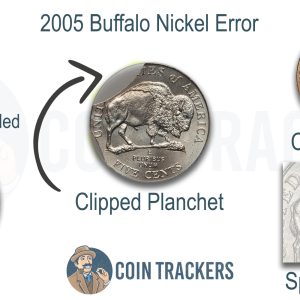
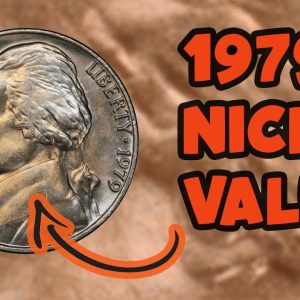
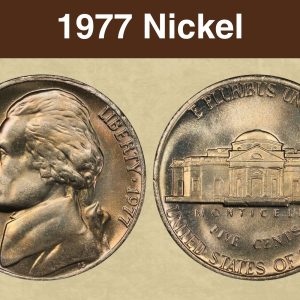
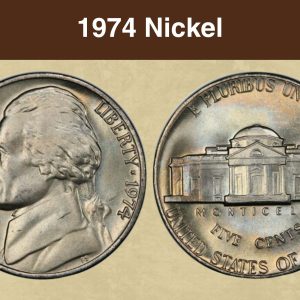
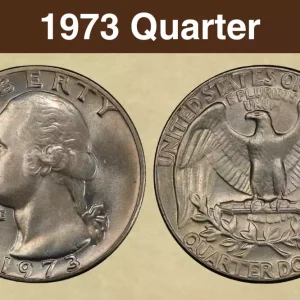
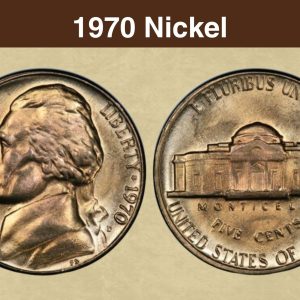
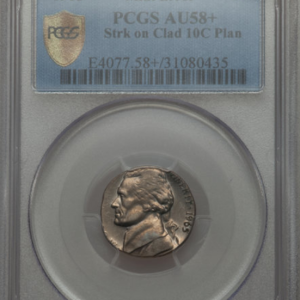
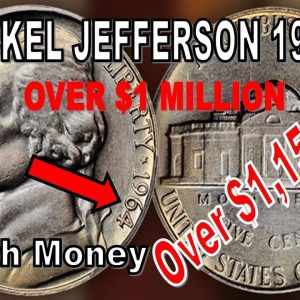
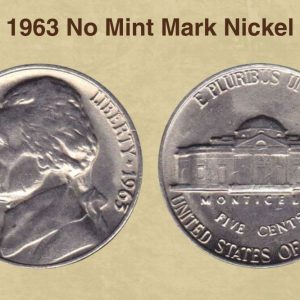
What makes a 1966 nickel rare?
Full Steps (FS): The rarity comes from the clarity of the steps on the Monticello design on the reverse. The steps must be fully struck and distinct for the coin to be considered “Full Steps”. High Grade: The coin must be in near-perfect condition, typically graded MS66 or higher by a professional grading service. Professional Grading: The coin must be certified and graded by a reputable service like PCGS or NGC to confirm its condition and authenticity, which is what adds to its value. No Mi…
What is the error on the 1966 5 cent coin?
Australia 1966(L) 5 Cent Tilted Partial Collar Error. London minted 1966 5 cent tilted partial collar error. Collar has engaged with about two thirds of the coin and the beginnings of a lip are apparent on the obverse. Metal flow noted in AUSTRALIA 1966 where there was no collar engagement at all.
What is a 1966 Jefferson nickel full steps?
A “1966 nickel full steps” refers to a 1966 Jefferson nickel with a high level of striking detail on the steps of Monticello, which is a rare and valuable feature. The “Full Steps” (FS) designation means the five (or sometimes six) steps on the reverse are fully and clearly defined. These coins are valuable due to the low number of them that were produced with such a clear strike, especially in high grades like Mint State 65 or higher.